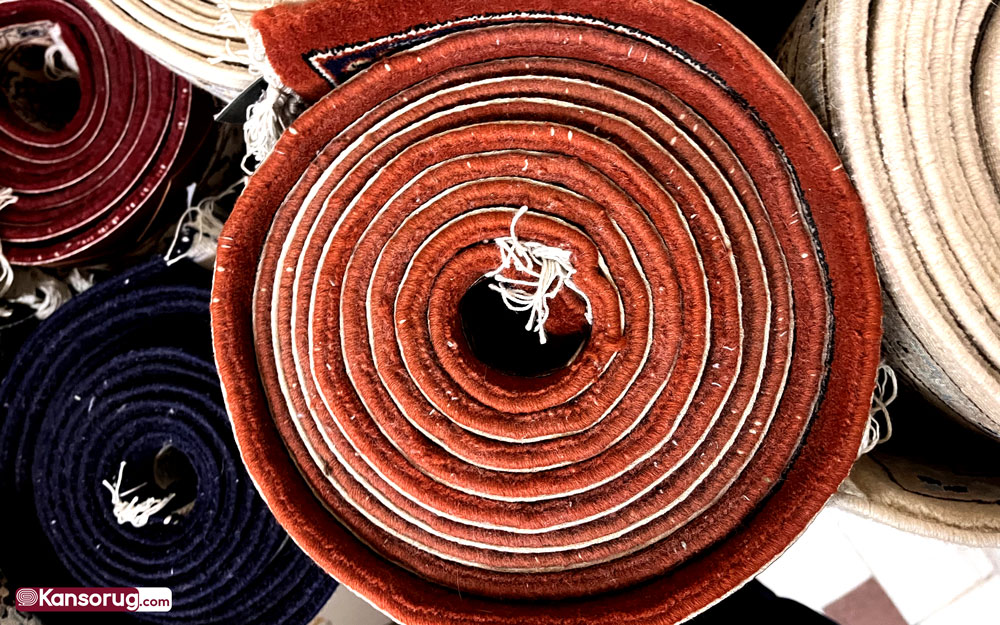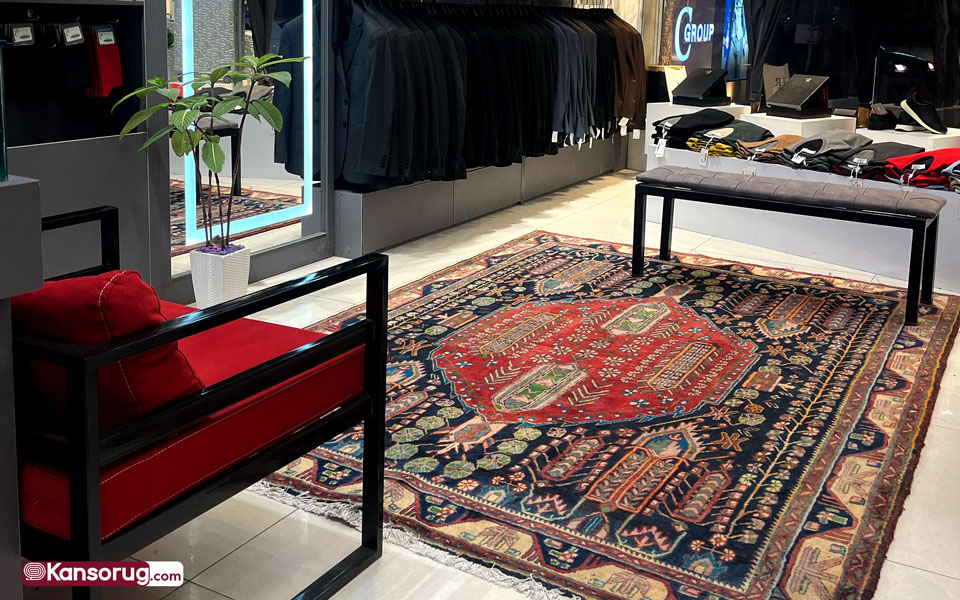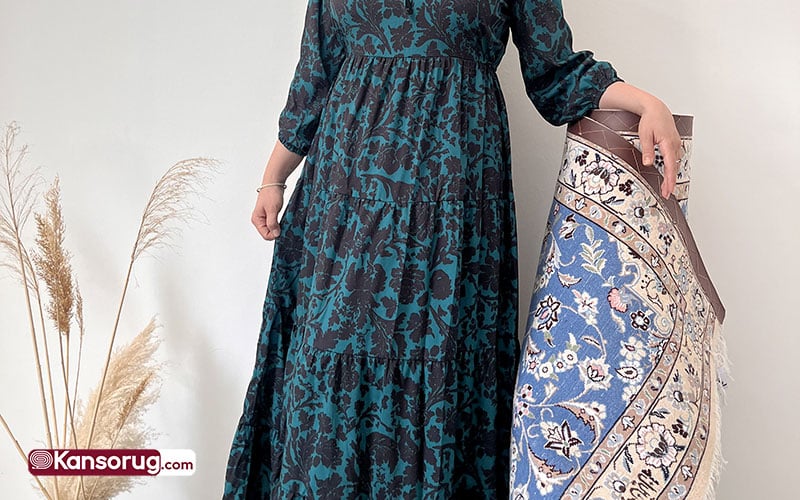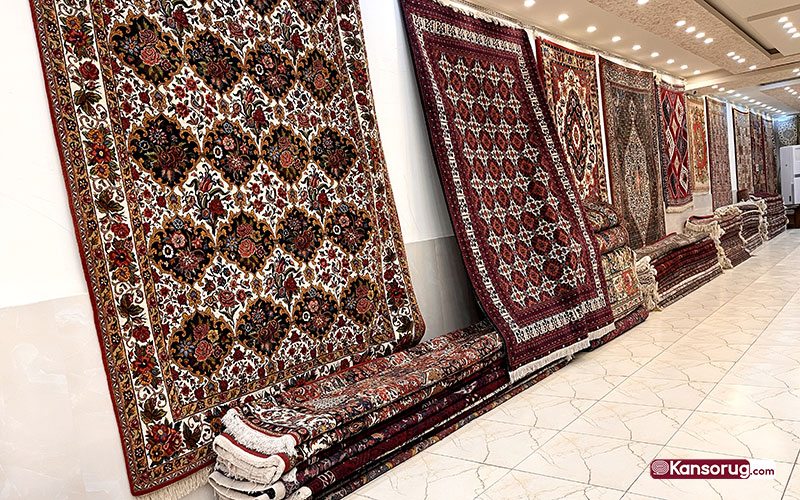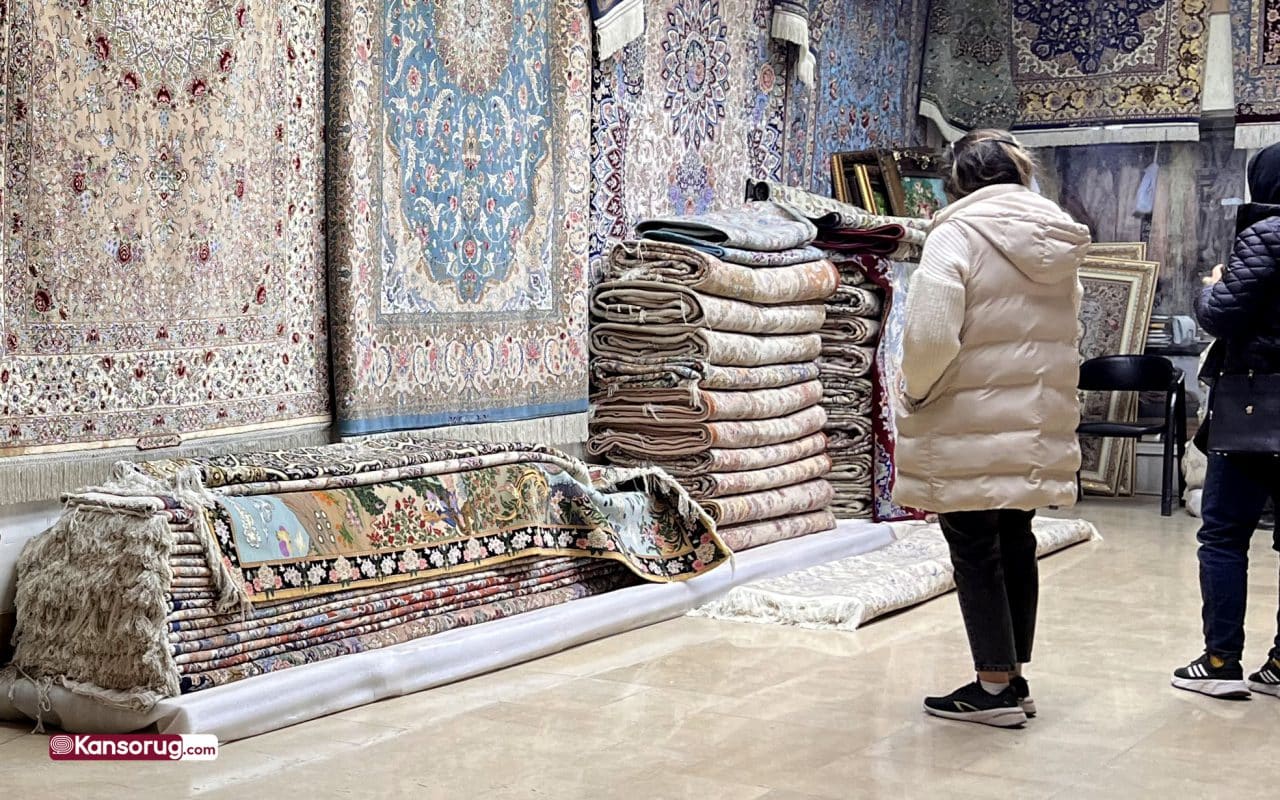How To Identify A Handwoven Rug? 5 Secrets Every Buyer Must Know
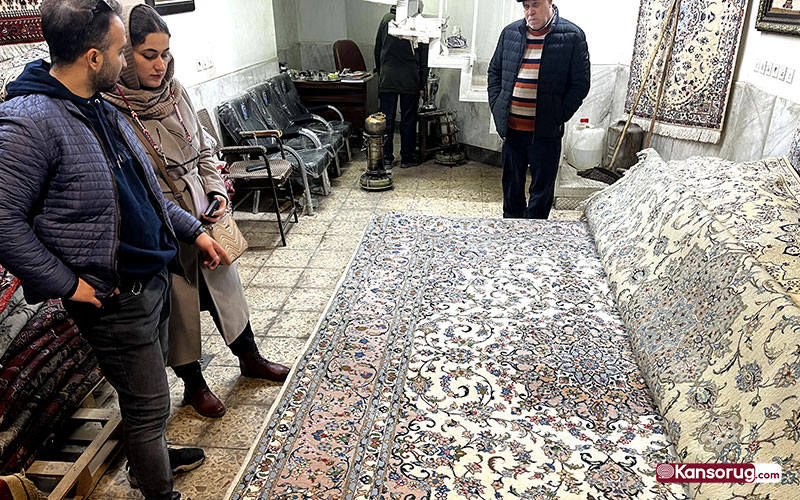
How can I identify an authentic oriental rug? How can I determine if my rug is handmade? What tools are available to distinguish genuine rugs from fake ones? How To Identify A Handwoven Rug? What is the best rug identification app?
Have you ever asked yourself, “How to identify my rug’s origin” or “Is my Persian rug authentic?” You’re not alone. Rug identification and carpet identification can be tricky, especially when you’re dealing with handwoven Persian rugs or Oriental carpets. Many people try a rug identification app, an oriental rug identifier app, or even a carpet identification app to find out where their rug is from or how old their Persian rug might be. While the best rug identification apps can help beginners learn how to identify Persian rug patterns or how to tell rug quality, no app can replace the trained eye of an expert who truly understands identifying Oriental rug patterns and handmade rug authenticity.
If you’ve ever wondered how to tell if a Persian rug is real, how to identify antique Persian rugs, or how to tell a handmade Persian rug from a fake one, you’re in the right place. At Kansorug, we specialize in Persian rug identification and Oriental rug appraisal, helping you understand what makes your rug unique. Simply send us a few photos, and we’ll tell you what your rug is, where it’s from, whether it’s handmade, and how much it’s worth, completely free. Because identifying rugs isn’t just our job, it’s what we love doing.
But in this article, we’ll keep things simple, straight from a Persian rug expert in Iran. You’ll learn how to identify a handmade rug on your own, step by step. Stay with us and discover the secrets of authentic Persian rugs.
In This Blog...
ToggleHow to Use Digital Tools for Rug Identification
Some rug identification apps use AI or image analysis to detect the style, origin, or pattern of a rug from a photo. They can help users find basic information or preview how a rug might look in their space. However, while these tools may identify a rug’s style, they cannot verify its authenticity. Most of them act more like virtual previews, using augmented reality to visualize the rug in your room.
In addition, general AI tools such as Google Lens or ChatGPT can offer a basic first look, but when it comes to deeper analysis—like assessing the quality, material, authenticity, weaving region, condition, or real market value, the expert’s eye remains irreplaceable.
Platforms like Pinterest can give you visual inspiration, and Google Lens can match rug designs, but neither can truly determine the type, material, or cultural origin of handmade Persian rugs. Given their uniqueness and vast diversity, relying solely on digital tools to identify authentic Persian handmade rugs is still a challenge.
What key factors should be considered for rug identification? These 4 indices are the most essential:
- Weave and Knots: Evaluating the density, symmetry, and patterns of the weave in a handmade rug is essential.
- Design and Colors: Analyzing traditional motifs and comparing patterns and color schemes.
- Materials: Identifying the quality and type of yarn, wool, cotton, silk, or fibers used in the rug.
- Value Assessment: Evaluating the age of the rug, where it was woven, and its overall health and quality are crucial in assessing handmade rugs.
How To Identify A Handwoven Rug? Key Features For Persian Rugs!

Understanding traditional rug identification techniques helps in assessing authenticity, along with using the best free rug identification app. However, the best “app” for this is still hands-on inspection! Let’s learn together.
1. Weave and Knots
To identify authentic handmade Persian rugs, examine the rug’s back. Knots are usually uneven in handwoven rugs, though the finer the rug, the more uniform and densely packed the knots become. Machine-made or non-Persian rugs have perfectly uniform, symmetrical, or mechanically produced knots, which, despite their lower cost, appear overly neat and flawless.
Machine-made or non-Persian rugs are typically of inferior quality. Machine-made rugs are entirely woven by machines with perfectly clean knots, whereas non-Iranian handmade rugs often lack durability or have low knot density, never matching the craftsmanship of Persian rug-making techniques.
2. Design and Colors
When identifying types of oriental rugs, motifs like Boteh (Paisley), Toranj (Medallion), and Shah Abbasi floral patterns are clear indicators of Persian authenticity. Natural dyes age beautifully over time, while synthetic dyes tend to fade or dull. Paying attention to designs is crucial because Persian rug artists follow strict principles in pattern creation. Fake rugs, woven outside Iran, often feature distorted, asymmetrical, or excessively thick and unrefined motifs, sometimes lacking any resemblance to traditional Persian designs.
Many Persian rugs, such as Na’in, tribal rugs, and Isfahan rugs, incorporate patterns inspired by natural elements like flowers, bushes, birds, and animals, reflecting Iran’s deep cultural connection with nature.
3. Colors and Pile Materials
Handwoven rugs are generally softer and more flexible. Fold a corner of the rug—if it bends easily without resistance, it is likely handmade. If it feels stiff, unyielding, or plasticky, it is probably not handmade. Persian rugs are typically crafted from natural materials like wool and genuine silk, offering a level of softness and beauty that captivates anyone who touches them.
Persian handmade rugs are often dyed with colors extracted from natural sources such as pomegranate skin, indigo leaves, and saffron. These dyes not only enhance the rug’s authenticity but also give it a unique luminosity. Non-Persian rugs, on the other hand, frequently use synthetic materials or low-quality wool, lacking the depth and richness of Persian rugs.
4. Signature Elements in Authentic Rugs
Many Persian rugs, especially those from Qom, Isfahan, and Tabriz, feature a distinct central medallion design. These medallions are often surrounded by floral and intricate motifs, symbolizing harmony and balance in Persian artistry.
Certain Iranian cities, such as Isfahan and Tabriz, incorporate their signature details into their rugs. For example, in identifying Isfahan rugs, the designer’s or manufacturer’s name is often woven into the lower or upper border of the rug.
5. Rug Value:
A handmade rug, no matter how exquisite its design or high-quality its materials, must be evaluated based on its origin and current condition. If you’re purchasing a Persian rug, it must have been woven in Iran. For older rugs, it’s essential to determine whether they have been previously used or if they are entirely new yet antique.
Another key approach to assessing a handmade rug is by considering three crucial factors:
Its age
The region where it was woven
Whether it is new or pre-owned
Tips Recommended by Iranian Rug Market Sellers
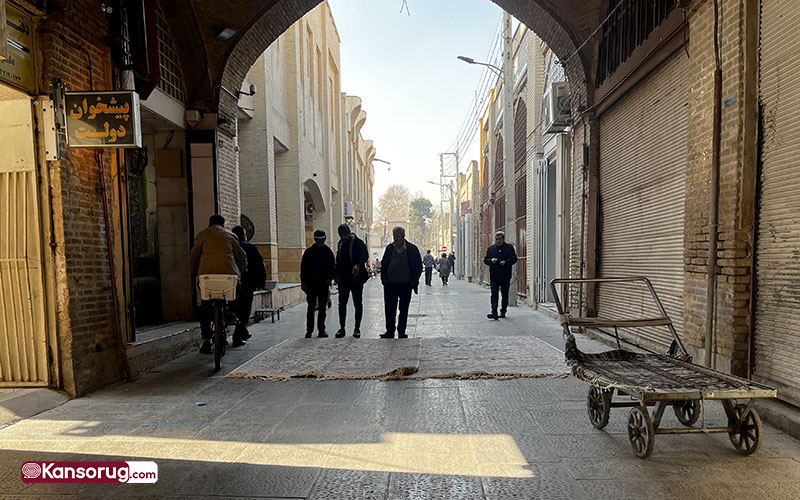
In addition to using a rug identification guide, traditional methods can also aid in determining a rug’s authenticity:
- Burn Test: Burning a single thread from the rug—if it smells like burnt hair and produces white ash, it is natural fiber; if it creates black, plastic-like smoke, it is synthetic.
- Consulting Experts: Trustworthy rug dealers and experts can provide detailed insights about a rug’s origin and quality.
- Inspecting for Damage or Wear: A rug with visible signs of decay or tears holds significantly less value than a new or well-preserved piece. To accurately assess its condition, it’s always best to consult a rug expert.
Bottom Line:
While digital tools like the best free rug identification apps or rug inspection apps have made rug identification more accessible, the most reliable method remains a hands-on examination by an expert. These apps, particularly when evaluating antique or high-value rugs, still fall short in replicating the depth of a professional assessment.
Having accurate knowledge of a rug’s origin, materials, knotting technique, and age is crucial in determining its authenticity and value. If you’re not an expert, you can rely on the tips and strategies we’ve provided. However, if you need professional guidance, the Kansorug team is here to assist you, whether you’re looking to buy or sell Persian rugs or simply seeking deeper insights into handmade carpets. We offer free consultations to help you make an informed decision!
Please rate Stellar
Your page rank:
Related Posts
Practical Solutions from Experts: The Best Rug Identification App
-
Posted by
Bahador Mir
- 0 comments
Which Is the World’s Best Handmade Carpet? History and Facts
-
Posted by
Bahador Mir
- 0 comments
How Do I Know What Carpet to Buy? Which Type of Carpet Is Best?
-
Posted by
kansorug_admin
- 0 comments
Hand-woven or Machine-made Carpet? Are Handmade Rugs Better?
-
Posted by
kansorug_admin
- 3 comments
Area Rugs: Adding Comfort, Style, and Functionality to Your Home
-
Posted by
kansorug_admin
- 4 comments
Spot a Real Deal: Identifying Persian Handwoven Carpets
-
Posted by
kansorug_admin
- 0 comments


